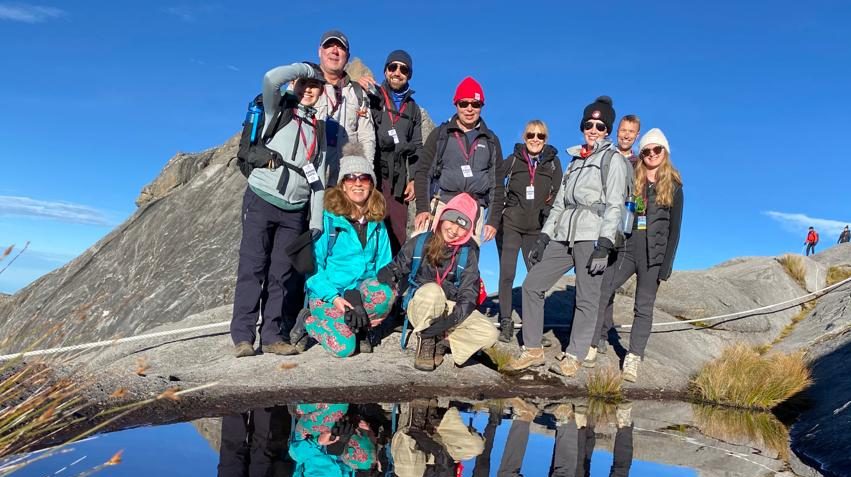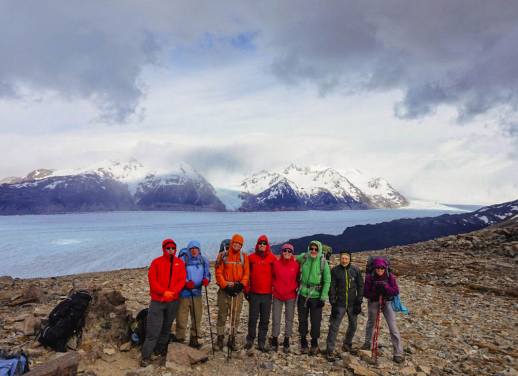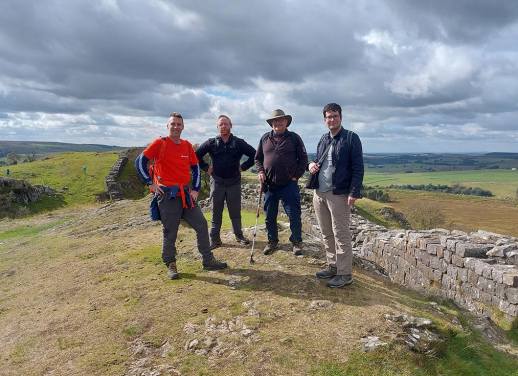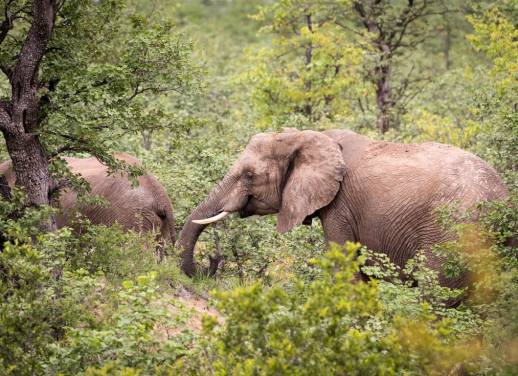A few months ago, I was fortunate to escape Melbourne’s rainy winter weather on Intrepid’s 11-day Sabah Adventure. Aside from knowing that Sabah is a Malaysian state on the island of Borneo and that it’s a brilliant destination to see wildlife, I knew very little about it.
So why this trip, I hear you ask? It combined some of my favourite things: hiking, nature and culture. I was practically packing my bags when I saw summiting one of South East Asia’s tallest mountains and seeing orangutans on the itinerary. Plus, it’s relatively close to Melbourne (by Australian standards).
It turned out to be one of the best trips I’ve ever been on. From seeing an orangutan mother cradling her baby to the first rays of sunlight illuminating Mt Kinabalu, it was full of emotions and pinch-me moments. Here are a few things I learned along the way.
A homestay is the best way to experience the local culture
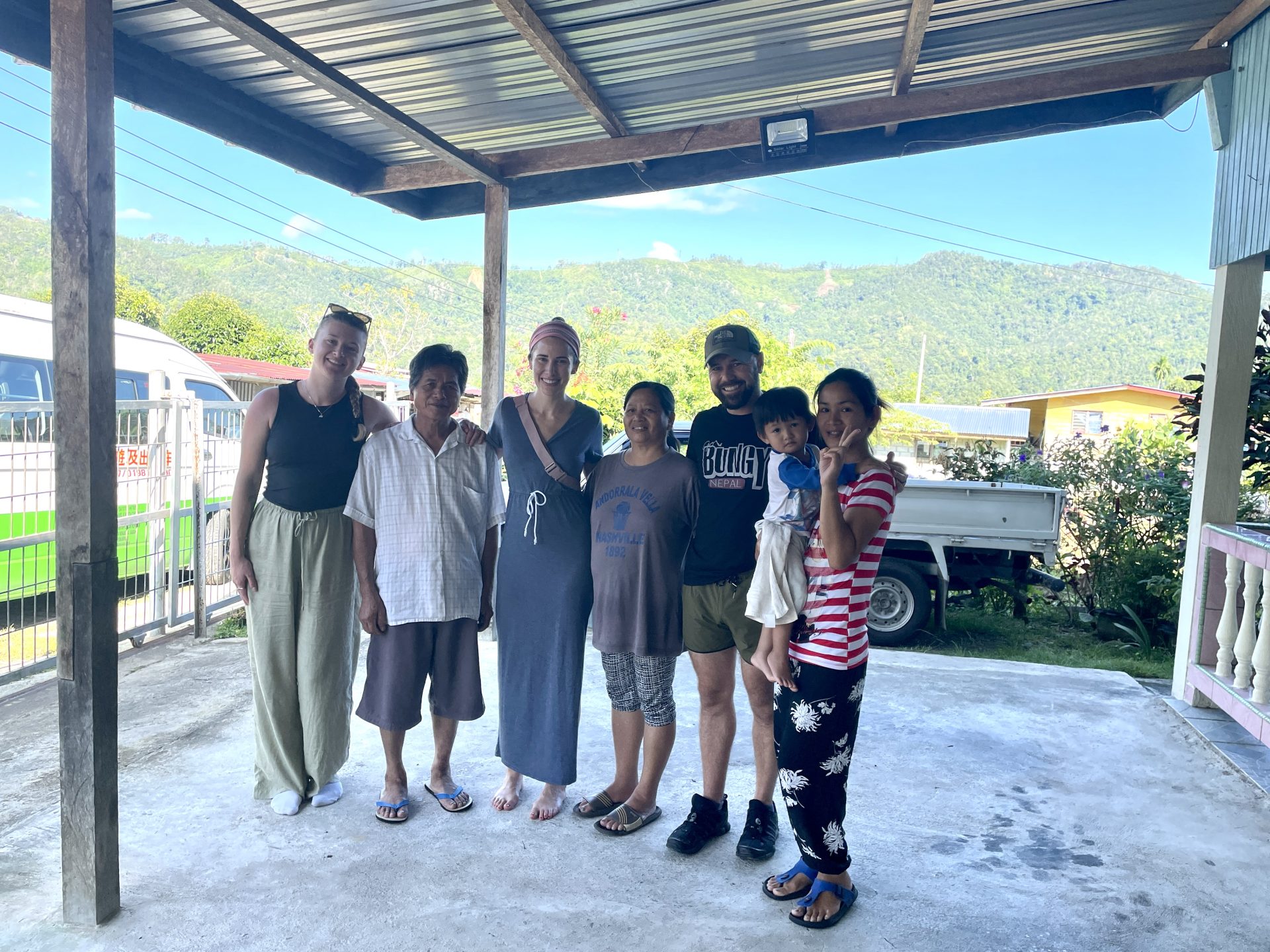
On day one, we jumped straight into it with a homestay at a local Dusun village; the Dusun are Sabah’s largest ethnic group. Stepping into a stranger’s home can feel daunting — especially when language barriers are at play — but our hosts treated us like part of the family. We quickly found our groove with communicating (with a bit of help from our amazing leader, Nostalia) and shared many laughs throughout the day. Never underestimate the power of body language and a sense of humour!
The house was simple and cosy. There was no wi-fi, roosters replaced alarm clocks and the bathroom was outside. And let me tell you, nothing rouses you from a sleepy state quicker than seeing a massive beetle as you open the toilet door!



In the evening, we enjoyed a potluck dinner in the community hall. It was a great opportunity to sample the local cuisine —including frog curry, which our host family prepared with a frog harvested from their garden earlier that day. We were treated to a traditional Dusun drum and dance performance before being invited to have a go ourselves. We were in stitches listening to how “different” we sounded to the locals. I’m blaming it on the homemade rice wine.
If you ever get an opportunity to do a homestay, do it. Some members of my group who initially felt a little awkward about it even said it was a highlight of their trip.
Intrepid trips are a great way to make new friends


The nitty-gritty aspects of travel get way less air time than the highlights — things like flicking leeches off your hiking boots or coping with a dodgy belly on the road. Being part of a small group as a solo traveller means you have new friends to share the highs with, but it also lends itself to the less glamorous moments. It’s the little things… like someone giving you a balm for your prickly heat rash (thanks, Mary!), or offering a jelly bean to give you a boost for the last stretch to the summit of Mt Kinabalu (Grant, you legend).
I also loved being with such a mixed bag of people. Echoing the wise words of Forrest Gump, life group travel is like a box of chocolates: you never know what who you’re gonna get. But we all hit it off from the get-go. A few seasoned group travellers among us had said it was a ‘good group’, so maybe we got lucky. But I also think Intrepid attracts a particular type of person (*cough cough* an intrepid person), so perhaps it had nothing to do with luck.
Hiking amnesia is a real thing



If I had to pick one highlight, it would be summiting Mt Kinabalu (4,095 metres). We met our mountain guides around 9am to begin the ascent to Laban Rata Resthouse. The trail took us through diverse ecosystems – from steamy lowland rainforest to Montane grasslands and subalpine meadows – and showcased Borneo’s incredible variety of plants, including the carnivorous pitcher plant.
We only covered six kilometres on day one, but with a relentless uphill climb and high altitude, it felt more like 60. We were so chuffed when we reached Laban Rata — and even more so when we saw a buffet of noodles and fried rice waiting for us.
We went to bed early for a 2am start the following morning. I hardly slept a wink, but after a couple of coffees I was ready to go. We set off in pitch darkness; all you could see was a long line of light from 160 head torches. After the first 700 metres of steps, it got super steep and we had to hoist ourselves along sheer granite ridges with a rope. I needed to catch my breath every 10 steps or so.
We eventually reached a plateau where we could see the summit, Low’s Peak. It was so close yet so far, and the mental game of trying to hush my inner critic began. But then the first twinkle of the morning sun hit the top of the peak, and the voice saying, ‘You can’t do this’, was replaced with, ‘Keep going!’
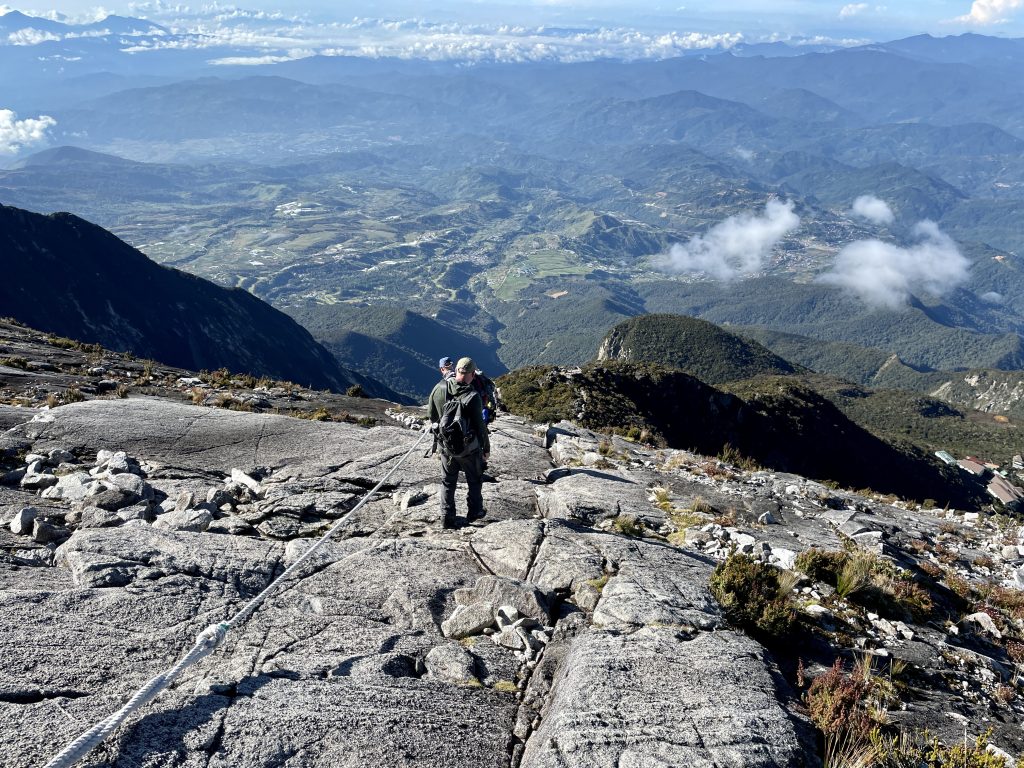
Pink and orange clouds appeared like brushstrokes in the sky and we were introduced to the plateau’s stunning shapes and textures which had been hidden by the night. I must’ve said wow at least a hundred times. I felt on top of the world at the summit, with the Bornean jungles in one direction, and the South China Sea in the other. There was even a shadow of the peak on the clouds behind us.
Mt Kinabalu was one of the hardest things I’ve ever done. But after descending the many, many stairs, having a hot shower and reliving the memories through my photos, I soon forgot about the pain in my legs and was thinking about which mountain to climb next. (Well, almost… I couldn’t walk properly for a few days after.) Hiking amnesia gets me every time.
No David Attenborough doco can prepare you for the awe-inspiring sight of an orangutan
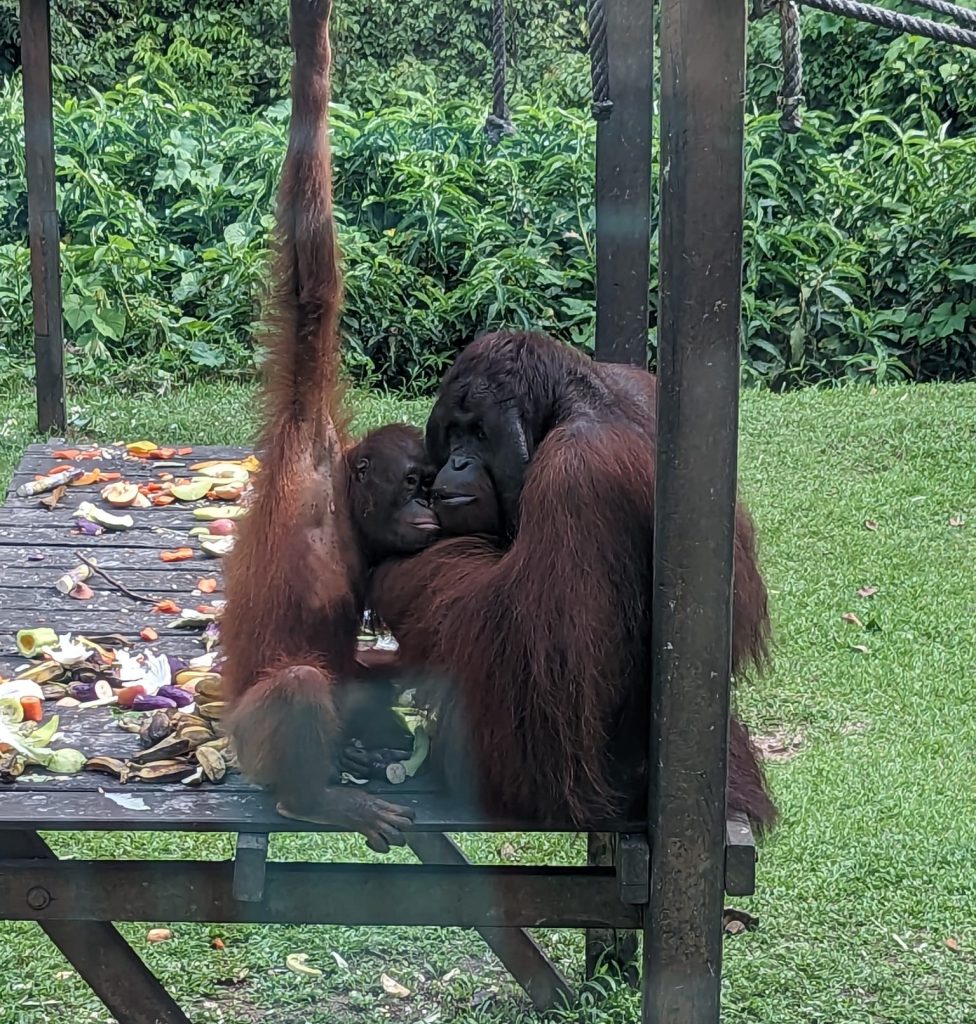
Seeing orangutans in the flesh took my breath away. Our first encounter was at the Orangutan Rehabilitation Centre in Sepilok, which was set up to help reintroduce injured, orphaned and displaced orangutans into the wild. They’re moved to the indoor or outdoor nursery depending on their age, ability and health.
We made a beeline for the indoor nursery which houses and cares for about 25 young and orphaned orangutans. It has a specially constructed jungle gym where they’re encouraged to climb trees, build nests and forage. It was hard to leave, but we couldn’t miss the opportunity to experience the morning feed at the outdoor nursery; this nursery houses more advanced orangutans with free access to the forest. The feeding platforms were laid with fresh fruit and we watched in awe as they peeled bananas and threw the skins in a pile on the floor.
We were also extremely lucky to spot a mother orangutan and her infant in the Kabili-Sepilok Forest Reserve. I could’ve spent hours watching them; the way she scratched her underarms or looked at her baby with loving caution as they swung from the vines above was uncanny. Our leader joked about how it’s funny watching primates watch primates.
Life is volatile and precious
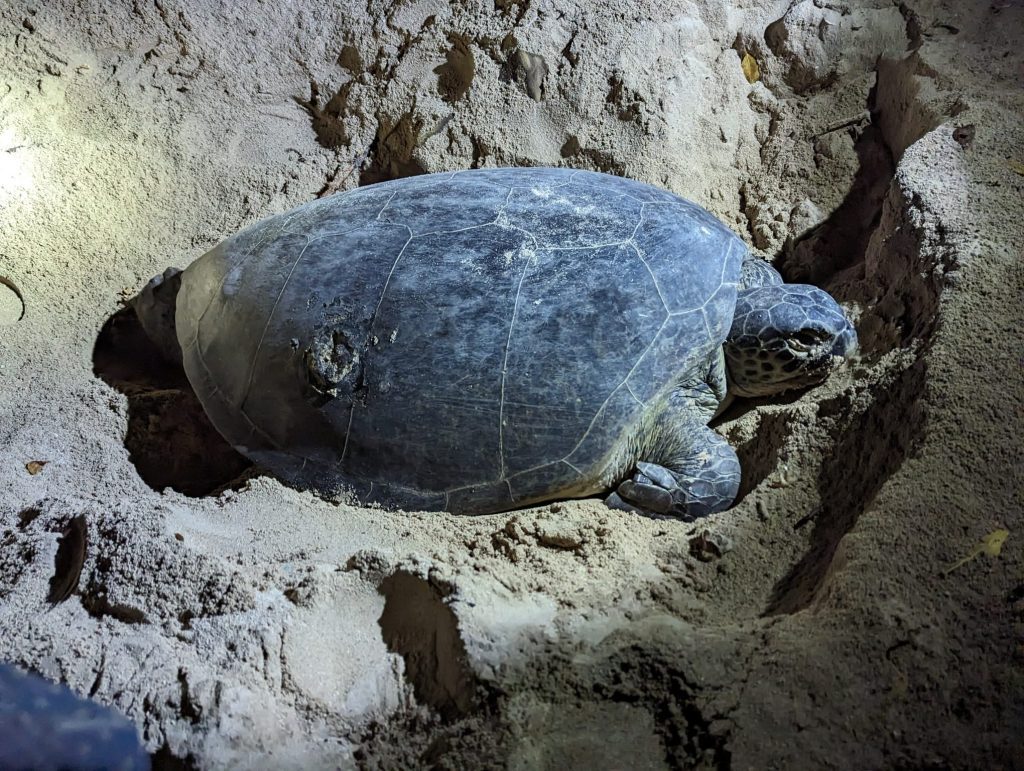
Never trust anyone who says they don’t have a lump in their throat watching baby sea turtles scamper into the sea. They’re lying. Almost every night, on the aptly named Selingan Turtle Island, female sea turtles come ashore to lay eggs. Turtles always nest on the very beach they were born as they have a remarkable ability to imprint on the beach’s magnetic field.
The island is part of a conservation program committed to ensuring the survival of sea turtles. Sea turtles are some of the oldest creatures on Earth, but they’re at risk of extinction due to pollution and commercial fishing.
The rangers then transfer the eggs into a bucket and re-bury them in a hatchery where they incubate in warm sand for about 60 days; this protects them from birds, lizards and other predators. They can also determine the number of males and females by the temperature of the sand. Our leader told us an easy way to remember it: ‘hot girl, cool boy’.



It was then time to watch the hatchlings being released. The ranger gently tipped a basket of 30 hatchlings onto the sand, and they ran instinctively into the water. A few hadn’t moved and we thought they might not make it, but after a few extremely tense seconds, they woke from their stunned state and scuttled towards the water with the others.
Watching these little guys begin their lives was bittersweet, as it’s estimated that only one in 1,000 hatchlings will survive to adulthood. We waved them off with encouragement, hoping that this statistic would change. It was a reminder of just how precious and volatile life can be.
Rice is the real breakfast of champions


I love experiencing what the locals eat for breakfast around the world. One of my favourite things about breakfast in Malaysia is that it’s primarily savoury. And it might be controversial depending on which side of the breakfast table you sit on, but I’d take nasi lemak over porridge any day! I guess there’s no profound lesson here. Just a gentle reminder that if you want the rice or curry for breakfast, have the rice or curry for breakfast… even if it does raise a few eyebrows back home.
I travelled on Intrepid’s 11-day Sabah Adventure.
—
(Turtle, orangutan and homestay images courtesy of James, Brandon and Kelly – thank you for being amazing people to travel with!)

